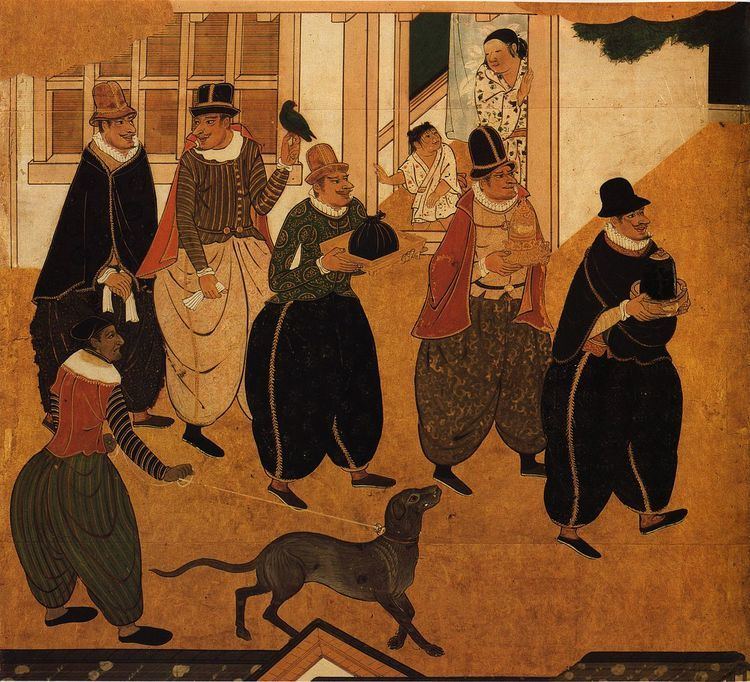 | ||
Nanban art (南蛮美術) refers to Japanese art of the sixteenth and seventeenth centuries influenced by contact with the Namban (南蛮) or 'Southern barbarians', traders and missionaries from Europe and specifically from Portugal. The term also refers to paintings Europeans brought to Japan.
Contents
History
Namban art developed after the first Portuguese ships arrived in Kyushu in 1543. While Christian icons and other objects were produced, Namban byōbu (南蛮屏風) or folding screens are particularly notable. Artists of the Kanō school were joined by those of the Tosa school in combining foreign subject matter with Japanese styles of painting. Canons of western art of the period such as linear perspective and alternative materials and techniques appear to have had little lasting influence. The persecution and prohibition of Christianity from the end of the sixteenth century and the Tokugawa policy of sakoku that largely closed Japan to foreign contact from the 1630s saw the decline of Namban art.
Reverse influence
While Japonism did not develop in the west until after the reopening of Japan in the 1850s and the 1860s, there is evidence of earlier Japanese influence in the art of Colonial Mexico, as Japanese crafts were traded through the Manila Galleons from Manila (Philippines) to Acapulco (Mexico) from 1565 to 1815.
